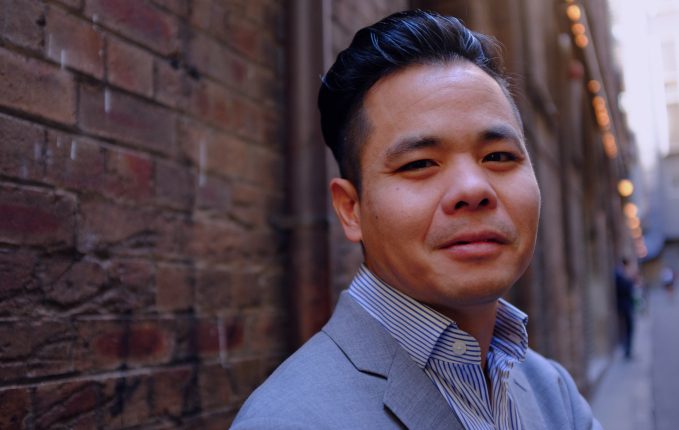What is the real difference between venture capital and private equity? Right Click Capital partner Benjamin Chong gives his view and provides a road map to how to spot a unicorn.
Uber’s initial public offering has undoubtedly been a bumpy ride for some of its investment passengers. Shares debuted on the New York Stock Exchange at US$42 a piece, valuing the company at about US$80 billion before a downward spiral set in. Some are calling this the investment flop of a lifetime.
But it hasn’t been bad news for all investors, particularly those who jumped on board early. In total, Uber raised around US$25 billion over 24 funding rounds, and for the early investors the IPO has been a payday of grand proportions.
US-based venture capitalists First Round Capital were the first institutional investor in Uber. According to a report by the Wall Street Journal, First Round Capital stand to make a colossal US$2.5 billion from their US$510,000 seed investment — nearly 5,000 times their outlay. And they will also benefit from exercising their ability to double down in the company’s series A funding round.
In the world of venture capital, the search goes on for the next Uber-corn. VCs are searching for potential and a minority stake in early-stage businesses that are unlikely to even be generating any revenue but have huge potential. In contrast, private equity firms will be looking for a majority stake in businesses already on an upward trajectory or ripe for turnaround.
While not all VC investments will deliver returns on the scale of a seed round investment in Uber, there are fundamental investment principles that VCs apply to maximise their potential to have an Uber in their portfolio and these are distinctly different to the way that private equity firms will construct their portfolios.
Power law is highly relevant for portfolio construction in the VC world. It recognises that a normal distribution of returns from investments, a standard bell-curve, does not apply. The reality is that most start-ups return a multiple below one (i.e., they return nothing at all or worse still, they fail). So, VCs need to be backing breakout companies who have the potential to achieve a return of ten or more times, rather than a portfolio of businesses hoping to earn ten percent. These breakout companies, often characterised by a large market size with highly disruptive innovation, allow VCs to pay back their entire fund (if not more) with one deal.
An early-stage VC portfolio generally consists of around 20 or more businesses, whereas a private equity portfolio will contain less than ten. This is because private equity is already backing established businesses with a history, so the survival odds have already dramatically improved since start-up.
The magic number of 20 start-ups in VC funds is seen as the most favourable mix as it allows enough exposure to different industries, technologies and stages of the economic cycle. This diversity is often not seen in private equity portfolios due to the businesses’ operating history, so diversification is less important for mitigating risk.
But VC is not just a numbers game. Constructing a portfolio is both art and science, and something that cannot be easily replicated by teams without experience in operating start-ups and having made such investments. VC veterans are uniquely adept at five things:
- Pattern spotting and selecting investable businesses according to a thesis is where investors use their deep knowledge and understanding of a sector to make an active commitment in a start-up. Having been in the sector since the 1990s, patterns emerge that serve as indicators of future success.
- Diversification to mitigate against systemic risk and overexposure to one sector. Overexposure to one sector such as fintech or prop-tech could spell bad news for a VC fund if an external event impacts the whole sector.
- Staggering the investments over a sufficient period of time to reduce risks of operating in one vintage period. Generally, a two- to four-year range safeguards against risks of overexposure in one part of the economic cycle.
- Nurturing founders to succeed is a major differentiator in the VC skillset. For VCs a lack of chemistry with the founder or a wavering of confidence in their personal ability to succeed is usually a deal breaker. A PE investor is usually a majority shareholder, creating a different dynamic with the founder and management.
- Negotiation ability to enable the VC double down and ensure a seat at the table at future rounds of financing. As the PE investor is already a majority shareholder, they have less opportunity to increase exposure to businesses in their portfolio that are performing well.
Negotiation is important for a number of reasons. A skilled VC will have given advance consideration and have a plan in place to double down on the winners and participate in later funding rounds on preferential terms. This is when VCs can reduce their risk and invest larger amounts of capital in a business that is demonstrating traction. A skilled and experienced VC will also have a seat at the table that enables them to use their own experience to work with the founder to drive forward the strategy of the business.
As Benjamin Franklin said, an investment in knowledge gives the best returns. Institutional investors such as banks, superannuation funds, endowment funds, mutual funds and insurance companies have the opportunity to access early-stage tech companies with the potential to shape the future of Australia by leveraging the experience and expertise available in the local VC market.
Understanding this expertise and how this differs from private equity will ensure that investors are able to capitalise on the benefits of both classes.
Benjamin Chong is a partner at venture capital firm Right Click Capital.
__________
[i3] Insights is the official educational bulletin of the Investment Innovation Institute [i3]. It covers major trends and innovations in institutional investing, providing independent and thought-provoking content about pension funds, insurance companies and sovereign wealth funds across the globe.


